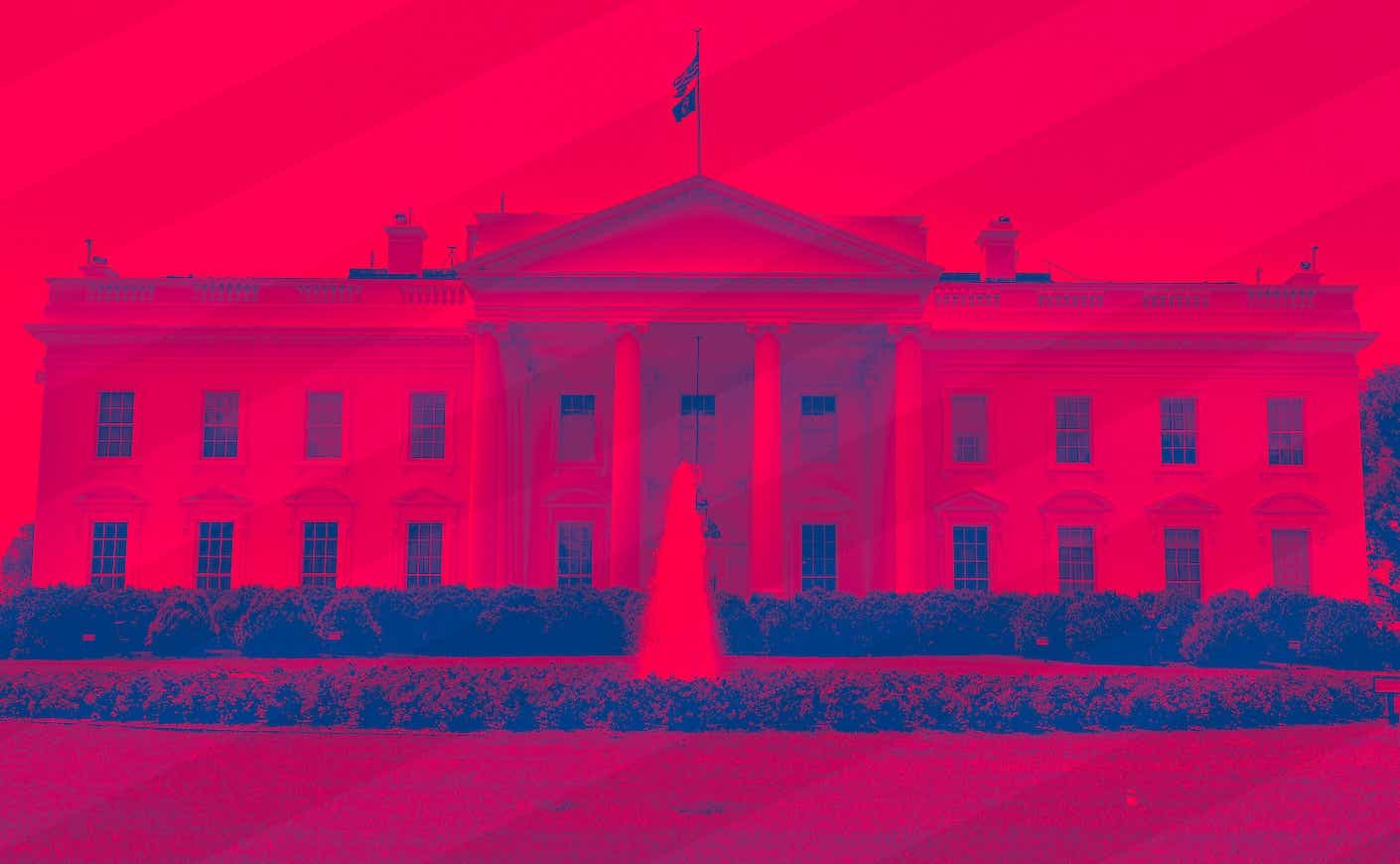Supporters hail it as a blueprint for a conservative revival, while critics see it as a roadmap to authoritarianism.
First introduced by the right-leaning Heritage Foundation in April 2022, Project 2025 lays out how the second Trump administration plans to radically reshape the federal government. From packing agencies with loyalists to rolling back abortion rights, LGBTQ protections, and child labor laws, its proposals reach into nearly every facet of American life.
The document is full of alarming ideas, but we combed through all 900+ pages to find the most worrisome policy proposals, so you don’t have to.
The Worst Parts of Project 2025
Government
Instead of nonpartisan civil servants implementing policies on everything from health to education and climate, the executive branch would be packed with Trump loyalists:
“In order to carry out the President’s desires, political appointees must be given the tools, knowledge, and support to overcome the federal government’s obstructionist Human Resources departments. More fundamentally, the new Administration must fill its ranks with political appointees. Devine, Kirk, and Dans observe that “the Trump Administration appointed fewer political appointees in its first few months in office” than any other recent presidency. This left career employees in charge in many places. This can occur even after departments have been fully staffed with political appointees. Vought writes that the White House Office of Management and Budget (OMB) should establish a ‘reputation as the keeper of “commander’s intent,”‘” yet OMB is dominated by career employees who often try to overrule political appointees serving in the various executive departments. Empowering political appointees across the Administration is crucial to a President’s success.”
The plan also calls for putting the Justice Department (and all its law enforcement arms like the FBI) under presidential control. This means Trump could have the power to investigate his political opponents and maybe even lock them up, as he has already vowed to do.
“If there is another department that has gone off the rails like HHS [Health and Human Services] during the Obama and Biden Administrations, it is the once proud Department of Justice (DOJ).”
Workforce
Project 2025 believes the Labor Department should relax child labor restrictions for teenagers, writing, “Some young adults show an interest in inherently dangerous jobs.”
“This would give a green light to training programs and build skills in teenagers who may want to work in these fields. DOL [Department of Labor] should amend its hazard-order regulations to permit teenage workers access to work in regulated jobs with proper training and parental consent.”
They want the Equal Employment Opportunity Commission (EEOC), as well as both public and private employers, to stop collecting employment data based on race and ethnicity, which they say “lead to racial quotas.”
LGBTQ Rights
Project 2025 undermines the rights of gay couples by redirecting federal funds to support what it calls a “biblically based” definition of family. Under this plan, the federal government would prioritize families “comprised of a married mother, father, and their children” while eliminating any policies that promote LGBTQ equality.
“The next secretary should also reverse the Biden Administration’s focus on ‘LGBTQ+ equity,’ subsidizing single-motherhood, disincentivizing work, and penalizing marriage, replacing such policies with those encouraging marriage, work, motherhood, fatherhood, and nuclear families.”
Authors of the plan also call gender-affirming care for youth a “social contagion” that primarily affects young girls. They even equate being transgender to pornography, which they believe should be outlawed:
“Pornography, manifested today in the omnipresent propagation of transgender ideology and sexualization of children, for instance, is not a political Gordian knot inextricably binding up disparate claims about free speech, property rights, sexual liberation, and child welfare.”
Abortion
While the project doesn’t specifically call for a nationwide ban, the plan would ensure that abortion isn’t regarded as healthcare and lays out aggressive proposals to use federal power to prevent the procedure:
“Conservatives in the states and in Washington, including in the next conservative Administration, should push as hard as possible to protect the unborn in every jurisdiction in America. In particular, the next conservative President should work with Congress to enact the most robust protections for the unborn that Congress will support while deploying existing federal powers to protect innocent life and vigorously complying with statutory bans on the federal funding of abortion.”
The document’s authors also want the U.S. Department of Health and Human Services, which the Heritage Foundation proposes renaming the Department of Life, to collect data on people who have abortions.
“HHS should use every available tool, including the cutting of funds, to ensure every state reports exactly how many abortions take place within its borders, at what gestational age of the child, for what reason, the mother’s state of resident, and by what method.”
On top of this, the agenda also calls for the Food and Drug Administration to reverse its 24-year-old approval of the widely used abortion pill mifepristone and pull it off the market. Other proposed actions targeting medication abortion include making it more difficult to access, such as requiring it to be dispensed in person instead of through the mail.
“Now that the Supreme Court has acknowledged that the Constitution contains no right to an abortion, the FDA is ethically and legally obliged to revisit and withdraw its initial approval, which was premised on pregnancy being an ‘illness’ and abortion being ‘therapeutically’ effective at treating this ‘illness.’”
Education
The plan would make extensive changes to public schooling, including cutting longtime low-income and early education federal programs like Head Start and even eliminating the entire Education Department:
“Federal education policy should be limited and, ultimately, the Federal Department of Education should be eliminated.“
The authors of the plan also want the next administration to rescind a Biden-era revision to the 1972 law Title IX, which prohibits sex-based discrimination by educational programs, that strengthened protections for LGBTQ+ students. They propose reimplementing Title IX interpretations from the Trump administration that defined “sex” in the statute as only “biological sex at birth.” In fact, just before Trump took office for the second time, a federal judge in Kentucky ruled that President Biden overstepped his authority by expanding the law: U.S. District Judge Danny C. Reeves called it an “attempt to bypass the legislative process.”
“The President should direct agencies to rescind regulations interpreting sex discrimination provisions as prohibiting discrimination on the basis of sexual orientation, gender identity, transgender status, sex characteristics…The President should direct agencies to focus their enforcement of sex discrimination laws on the biological binary meaning of ‘sex.'”
Can Project 2025 really be carried out?
With Trump back in the White House, the $22 million Project 2025 initiative is already moving from blueprint to reality. The Heritage Foundation has begun tapping its roster of vetted allies to quickly fill key government posts, putting in place the personnel needed to carry out its sweeping agenda.
Among them is Project 2025 contributor E.J. Antoni, Trump’s nominee to lead the U.S. Bureau of Labor Statistics, who has already stirred controversy with a proposal to suspend the agency’s monthly jobs report — a closely watched economic indicator. Antoni argues that frequent revisions have made the data unreliable and misleading, and instead favors releasing quarterly figures, which he says would be more accurate, though less timely.
Critics see the proposal as an early glimpse of how Project 2025 could remake — and in some cases sideline — federal data and institutions that have traditionally operated outside partisan control. If early moves like this are any sign, the roadmap critics fear may already be unfolding, one appointment and one policy shift at a time.









